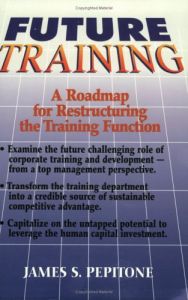
Future Training
A Roadmap for Restructuring the Training Function
Recommendation
James S. Pepitone, a pioneer in the transformation of workplace training, wants companies to get their money’s worth from this vital yet often ill-used activity. To that end, he developed “Humaneering,” a training concept focused on helping workers attain top performance and productivity. Pepitone based his approach on synthesizing “more than 100 scientific laws, theories and models concerning human behavior, technology transfer, organizational learning, performance improvement, organizational productivity and managed change.” Clearly, making this mix work is a bold, ambitious undertaking. Pepitone repeatedly warns that his book is difficult to read. This is not necessary. He is a strong writer and extremely knowledgeable, though perhaps too negative about current training. He presents a logical case for restructuring corporate training. Although he leaves programming specifics up to individual companies, he does provide clear, sensible reasons and goals for change. getAbstract believes that executives, corporate learning officers and training directors will benefit from his insights and suggestions.
Summary
About the Author
James S. Pepitone is a performance-improvement business consultant in Dallas, Texas.











Comment on this summary